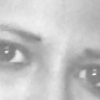The population of India in 2011 is 1,210,193,422 or 1.21 billion with 637.7 million male population and 586,500,000 female population. India is the second highly populated country in the world next only to China which has a population of 1.34 billion. The sex ratio is 940 females per 1,000 males. Among them 50% of the population is of the age group 0 to 25 and when they all reach the age of fertilization, it is estimated that India would overtake China in its population.
17.31% of the world’s total population lives in India. It has a growth rate of 1.548%. This means every minute 29 babies are born and this makes 1,768 every hour, 42,434 every day, 12,73,033 every month and 1,55,31,000 every year. The growth rate was 2.115% in 2001 and it has reduced to 17.6 person in 2011 and this is one of the achievements of the family planning measures of the Central and State governments in India. However the fertility rates vary from state to state. In Kerala it is only 1.7 children per mother while in Bihar it is 4.3 children per mother. The Indian average of this fertility rate is 2.72 children per woman. The main reason for increase in population is illiteracy, poverty and lack of awareness of the people. In poor families birth of a child is considered to be a supporting hand for increasing the income of the family.
Every thousand people, 22.22 children are born every year while 6.4 people die for every thousand people per year. This huge difference makes the population to rise at an alarming rate. Increase in population is lesser in places where the literacy rate is more. For example the literacy rate is Kerala is the highest with 93.91% and there the increase rate is much lower.
As per 2011 the state with highest population is Uttar Pradesh with 199,581,520 people contributing 16.49% of the total population of India and the territory with lowest population is 64,429. The densely populated state is Delhi with 9340 people per square kilometer and the sparsely populated state is Arunachal Pradesh with 17 people per square kilometer. Kerala has the highest sex ratio with 1084 females for 1000 males and Daman and Diu has the lowest sex ratio with just 618 females for 1000 males.
72.2% of the total population lives in the 638,000 villages of India and the remaining 27.8% of the people live in 5,480 towns and cities. 80.5% of the total population of India are Hindus, 13.4% are Muslims, 2.3% are Christians, 1.9% are Sikhs, 0.8% are Buddhist, 0.4% are Jains and 0.6% are others. Kerala has the highest literacy ratio with 93.91 and then comes Lakshadweep with 92.28% and Mizoram ranks third with 91.58%. 41.03% of the population of India speaks Hindi dialects, 8.11% of people speak Bengali, 7.19% of people speak Telugu, 6.99% of people speak Marathi, 5.91% of people speak Tamil and other languages fall below them.
It is estimated that in 2020 the population of India would be 1,326,093,000 and in 2030 it would be 1,460,743,000, in 2040 it would be 1,571,715,000 and in 2050 it would be 1,656,554,000. It is expected to overtake China by 2020 and become the thickly populated country in the world.
Article Source :
http://www.veethi.com/articles/population-of-india-article-306.htm
Keywords :
population of india
,
indian population
,
rise in indian population
,
indian population statistics



